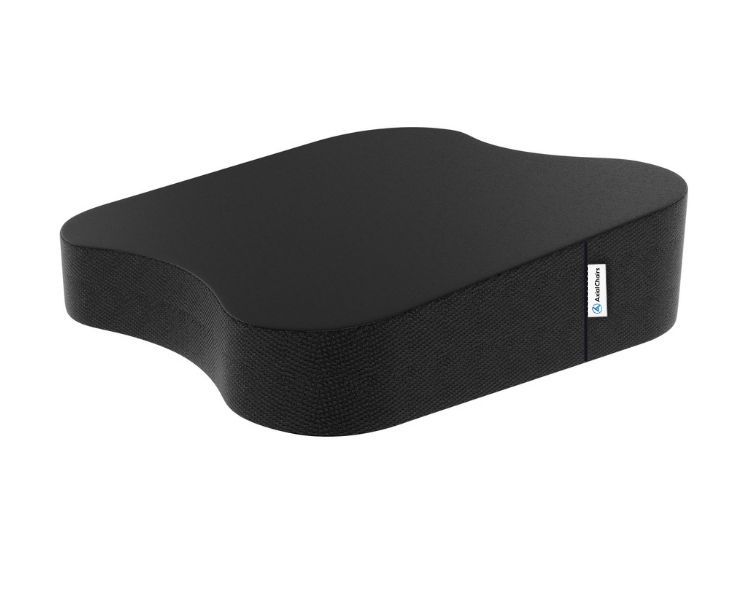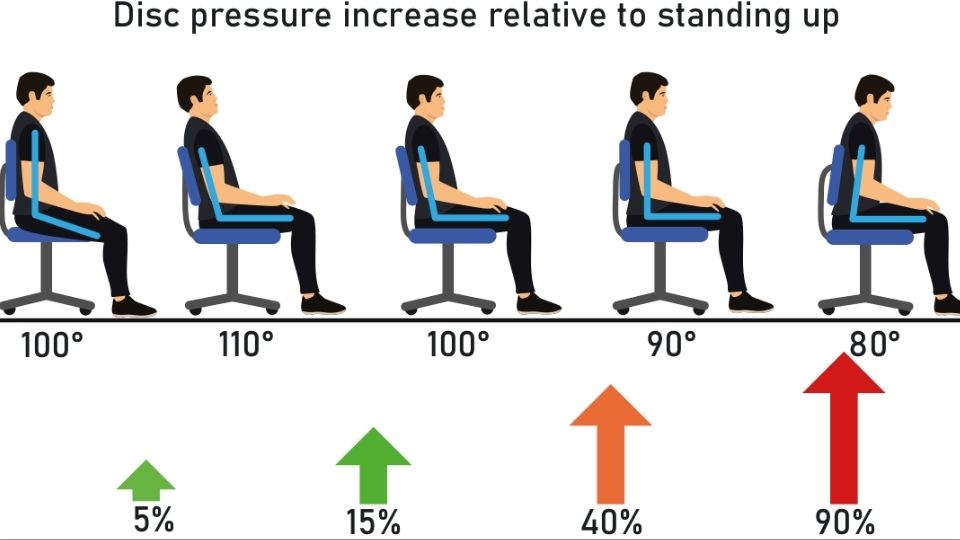Do you ever experience pain and tightness in your lower back or hips that make it difficult to get around? If so, then there’s a chance that the problem is your SI joint. The SI joint, or sacroiliac joint, is located in between the spine and pelvis and is responsible for many of our daily movements from walking to sitting down.
When this joint becomes immobilized due to injury or inflammation, it can cause serious discomfort throughout the hips and lower back. Luckily, if managed correctly with proper medical treatment such as physical therapy or injections into affected areas, this issue can be resolved once again allowing freedom of movement without pain. In today’s blog post we will discuss what an si-joint dysfunction looks like as well as potential treatments available so that you can return to normal activity once again!
As a general rule, SI joint pain can be caused by a variety of factors, such as pregnancy, arthritis, injury, and muscle imbalances. These factors can lead to inflammation, nerve irritation, and difficulty walking or standing. Seeking medical attention and proper treatment can alleviate symptoms and improve quality of life.
I believe that I can help you! With over 30 years of experience in chiropractic practice and training in ergonomics, I’ve written a book on posture, appeared on national television, and created several solutions to improve sitting comfort and posture. Additionally, I have successfully crowdfunded a project for ergonomic seat cushions.
3 Tests to Tell You if Your Back Pain Is Caused by SI
I know how you feel; back pain can be incredibly debilitating, especially when you’re not sure what’s causing it. As a chiropractor, I’ve seen my fair share of patients with sacroiliac (SI) joint pain. Here are three tests that you can perform at home to help determine if your back pain is caused by your SI joint:
FABER test: Lie down on your back and cross your ankle over your opposite knee. Gently push down on the raised knee while keeping your pelvis flat on the ground. If you feel pain in your SI joint, this could be an indication of an issue in that area.
Compression test: Lie down on your side with the painful SI joint facing up. Place your hand on the top of your hip and apply gentle pressure. If you feel pain, it may be a sign of SI joint dysfunction.
Distraction test: Lie down on your back and place your hands on the front of your hips, with your fingers pointing toward your toes. Gently pull your hands apart, creating a slight separation of the hips. If this alleviates the pain, it’s possible that your SI joint is the source of your discomfort.
How to Unlock SI Joint by Yourself
In my clinical experience, I’ve found that there are several ways to unlock your SI joint by yourself. Here are two techniques that you can try at home:
Self-mobilization: Sit on the edge of a firm surface, such as a bench or a bed, with your feet flat on the floor. Place one hand on the top of your knee and the other hand on the bottom of the same knee. Gently push down with the top hand while pulling up with the bottom hand. You should feel a slight movement in your SI joint. Repeat this process on the other side.
Pelvic tilts: Lie down on your back with your knees bent and your feet flat on the floor. Tighten your abdominal muscles and gently tilt your pelvis upward. Hold for a few seconds, then release. Repeat this movement 10-15 times.
All Day Comfort & Support
What Is the Treatment for Sacroiliac Joint Pain?
When it comes to treating SI joint pain, my approach as a chiropractor is to focus on spinal alignment and a balanced and strong core. This is crucial for sitting without causing pain in the knees. Treatment options may include:
- Chiropractic adjustments: Spinal manipulation can help realign the SI joint and alleviate pain.
- Physical therapy: A physical therapist can guide you through exercises that strengthen the muscles supporting the SI joint, improving stability and decreasing pain.
- Medications: Over-the-counter pain relievers and anti-inflammatory medications can help manage pain and inflammation.
- Injections: In some cases, corticosteroid injections may be recommended to reduce inflammation and provide relief.
SI Joint Pain Exercises to Avoid
While exercise is essential for maintaining a strong and stable core, certain activities can exacerbate SI joint pain. Some exercises to avoid include:
High-impact activities: Running, jumping, and other high-impact activities can place unnecessary stress on the SI joint, worsening pain.
Deep squats and lunges: These movements can strain the SI joint and surrounding ligaments.
Heavy lifting: Lifting heavy weights can put excess pressure on the SI joint, especially if proper form is not maintained.
SI Joint Spasm
SI joint spasms are involuntary contractions of the muscles surrounding the SI joint, which can lead to intense pain and discomfort. If you’re experiencing an SI joint spasm, it’s crucial to address the underlying cause, whether it’s muscle imbalances, joint misalignment, or a combination of both.
Here are a few strategies for managing and preventing SI joint spasms:
Stretching: Regularly stretching the muscles surrounding the SI joint, such as the hamstrings, hip flexors, and glutes, can help reduce muscle tension and prevent spasms.
Heat therapy: Applying a heating pad to the affected area can help relax tight muscles and alleviate pain.
Massage: Gentle massage can help release muscle tension and ease discomfort caused by spasms.
Maintaining proper alignment: Ensuring proper spinal alignment through chiropractic care and practicing good posture can help prevent muscle imbalances and spasms.
Strengthening exercises: Incorporating exercises that target the core and the muscles surrounding the SI joint can help stabilize the area and reduce the likelihood of spasms.
Adopting appropriate self-care strategies can significantly improve your quality of life. If you’re unsure about the cause of your pain or need further guidance, it’s essential to consult with a healthcare professional, such as a chiropractor or physical therapist, to develop a personalized treatment plan.
SI Pain When Sitting: The Basics that You Need to Consider
First things first, let’s understand what the SI joint is and why it can cause such discomfort. The sacroiliac (SI) joint connects the spine to the pelvis, and it plays a crucial role in supporting your body weight and helping you move. When this joint is out of alignment or inflamed, it can cause pain in the lower back and hips, sometimes making it difficult to walk.
One of the central mechanisms for relieving SI joint pain is ensuring proper spinal alignment and maintaining a balanced and strong core. A strong core can provide better support for your spine, which in turn can help alleviate pressure on the SI joint. To strengthen your core, consider incorporating exercises like planks, bridges, and bird-dogs into your routine.
Best Seat Cushion for SI SupportAxial Ergonomic Seat Cushion® | Seat Chair Wedge
Quick Guide: A 30-Second Summary

All Day Comfort & Support
Product Name
Axial Designs™ Seat Cushion
Price
$149
Warranty
1 Year
Type
Posture Wedge
Top Layer
100% Natural Latex (Molded)
Bottom Layer
High-Density Foam
Top Material
Isometric Grippy Vegan Leather
Bottom Material
Non-Slip Material
Side Material
3D Breathable Fabric
(I’ve written a complete hands-on review about the best sitting position for sciatica, and here is what I tested best with my sciatica patients.)
But what about sitting? I often hear from my patients that sitting for long periods can cause pain in their knees as well. Well, the good news is that the right kind of support can make all the difference. I always advise using an expert-designed ergonomic seat cushion made with a natural latex top and a high-density base layer foam. This combination of materials and the correct seated angle (below diagram) provides excellent support, resilience, and comfort, helping to alleviate pressure on the SI joint and knees while you sit.
I know some people might be tempted to use memory foam cushions, but I never recommend them. In my opinion, memory foam lacks the pressure support and resilience needed for proper spinal alignment. Plus, it’s a toxic material that can get uncomfortably hot when you sit on it for extended periods.
In addition to strengthening your core and using the right kind of seat cushion, it’s crucial to address the root cause of your SI joint pain. That’s where visiting a chiropractor can be a game-changer. As a chiropractor, I’ve helped countless patients with SI joint pain by identifying and correcting misalignments in their spine and pelvis, which can provide immediate relief and promote long-term healing.
The Core Muscles are Generally the Core of the Problem!
A common issue faced by those experiencing SI joint pain is the tendency to sit without activating their core muscles. This can be a frustrating and debilitating problem to deal with. As someone who has seen the negative impact of SI joint pain, I wanted to create a solution that would help individuals engage their foundational muscles throughout the day. This led me to design a seat cushion that provides support, comfort, and muscle disbursement.
After extensively testing different prototypes, I was able to develop a cushion that met my requirements. The cushion is made from natural latex, which is more supportive than other materials like memory foam or polyurethane foams. Its higher density ensures proper spinal alignment, while the 4-way stretch vegan leather covering provides both durability and comfort.
Through the use of this cushion, many of my patients have been able to engage their core muscles while sitting, resulting in significant relief from their SI joint pain. I am confident that it can provide similar relief for you as well. So, if you are experiencing SI joint pain while seated, I encourage you to try my seat cushion to see if it can help you too.
Constructing an Ergonomic Chair: Instructions and Proposals
To most effectively manage your seating arrangements, it’s essential to concentrate on various aspects, with chair adaptation being a significant factor. Several methods can be used to achieve this, such as incorporating an ergonomic cushion and lumbar support. These adjustments can alleviate stress on your back and legs, promoting comfort and proper posture during extended periods of sitting. Additionally, ensure your feet are firmly on the floor and that there’s enough distance between your chair and workspace. By adhering to these tips, any standard firm chair can be converted into an ergonomic refuge that supports long-term health and well-being.
Ergonomic Seating Addition
An ergonomic seat wedge (shown above) can be applied to align your spine properly and improve balance. This superior natural latex seat cushion aids in fortifying core muscles while easing pressure in other parts of the body, such as the neck and shoulders. Moreover, sitting upright places less pressure on your hips and knees, as it activates more muscle groups at the same time compared to resting on a soft surface. This upright posture helps prevent stress-inducing habits that individuals may unknowingly develop while working.
All Day Comfort & Support
Arthritis and Sports Medicine: Treatment Options for Sacroiliac Joint Pain and Low Back Pain
Sacroiliac (SI) joint pain and low back pain are common issues that can arise due to various factors, such as arthritis or sports-related injuries. Sports medicine professionals are trained to diagnose and treat these conditions, providing patients with a range of treatment options to alleviate their discomfort.
When arthritis affects the SI joints, it can cause inflammation, leading to pain and stiffness in the lower back. In such cases, a combination of medication and physical therapy may be recommended. Nonsteroidal anti-inflammatory drugs (NSAIDs) can help reduce inflammation and pain, while corticosteroid injections may be used for more severe cases. Physical therapy focuses on improving flexibility, strengthening muscles around the SI joints, and correcting posture to reduce strain on the joints.
In sports-related injuries, a sports medicine practitioner may recommend a combination of rest, ice, compression, and elevation (RICE) to help alleviate pain and swelling. In addition to RICE, physical therapy, chiropractic care, or acupuncture may be recommended as part of a comprehensive treatment plan.
Understanding SI Joints Dysfunction: The Connection between Joint Pain and the Sacroiliac Joint
Joint dysfunction, specifically in the SI joints, can lead to a range of symptoms, including joint pain, low back pain, and discomfort in the hips and buttocks. The SI joints connect the spine to the pelvis, and their proper functioning is crucial for pain-free movement and overall well-being.
SI joint dysfunction can occur due to various reasons, such as an injury, arthritis, pregnancy, or age-related wear and tear. Symptoms may include pain while sitting, standing, walking, or climbing stairs. In some cases, the pain may radiate to the lower extremities, making it difficult to differentiate SI joint dysfunction from other conditions like sciatica or lumbar disc herniation.
To diagnose SI joint dysfunction, a healthcare professional will typically perform a physical examination and may use imaging studies like X-rays or magnetic resonance imaging (MRI) to rule out other potential causes of pain. Once the diagnosis is confirmed, a combination of treatments may be recommended, including medication, physical therapy, and, in some cases, surgical intervention. By addressing SI joint dysfunction and the associated pain, patients can work towards regaining their mobility and quality of life.
Summary
Whether or not you think your lower back pain might be caused by the sacroiliac joint, it’s still best to consult a medical professional as soon as you can. The soonest they can diagnose and recommend treatment will help with relieving any discomfort and getting back to your regular activities. Additionally, depending on the severity of the pain, physical therapy or chiropractic adjustments could provide relief in addition to medications or lifestyle changes.
If you’re struggling with this condition, it’s important that you take quick action so that your symptoms don’t worsen and give you grief further down the line. We understand how hard this can be for many of our readers, especially when decreases in mobility or even being unable to walk are involved. Everyone has their own support system in life but if you’re looking for a compassionate caregiver for a loved one – particularly those who are aging – we hope this post has been helpful in giving insight into how SI joint pain works and what steps may need to be taken to address it in a caring tone of voice!
Sources:
- Trindade, C.A., Briggs, K.K., Fagotti, L., Fukui, K. and Philippon, M.J., 2019. Positive FABER distance test is associated with higher alpha angle in symptomatic patients. Knee Surgery, Sports Traumatology, Arthroscopy, 27, pp.3158-3161.
- Robinson, H.S., Brox, J.I., Robinson, R., Bjelland, E., Solem, S. and Telje, T., 2007. The reliability of selected motion-and pain provocation tests for the sacroiliac joint. Manual therapy, 12(1), pp.72-79.
- Levin, U., Nilsson-Wikmar, L. and Stenström, C.H., 2005. Variability within and between evaluations of sacroiliac pain with the use of distraction testing. Journal of manipulative and physiological therapeutics, 28(9), pp.688-695.








